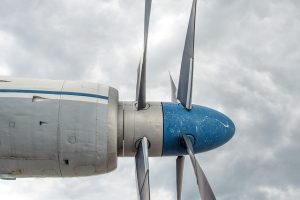
Ice building is a concern for airplanes powered by carburetor engines. When the temperature drops below 32 degrees Fahrenheit, moisture may condense and freeze on the carburetor’s throttle valve and other components. If left unchecked, icing such as this may cause a sudden RPM drop, or it may disable the engine altogether. Carburetor engines, however, are often equipped with a feature known as carb heat to prevent icing.
What Is Carb Heat?
Carb heat is a deicing feature for carburetor engines. It’s commonly used to prevent icing on both automotive and aircraft carburetor engines.
A carburetor is a device that mixes a specific ratio of fuel to air. There are no fuel injectors. Instead, the carburetor is designed to mix the fuel and air for combustion. Carburetors, though, can develop ice on their internal components. Carb heat is designed to melt and prevent ice buildup using heat.
How Carb Heat Works
A typical carb heat system works by drawing heat from the engine’s exhaust manifold. Combustion creates heat. As the engine burns a mixture of fuel and air, it will generate heat — and lots of it. Carb heat systems are designed to redirect some of this heat to the carburetor.
When activated, the carb heat system will redirect heat from the engine’s exhaust manifold to the carburetor. If there’s any ice in the carburetor, it will melt. This supplemental heat will also prevent the formation of new ice.
How Carb Heat Affects Engines
Carb heat is designed to eliminate and prevent ice on carburetor engines. Activating this system, however, may affect the engine’s performance.
Hot air is less dense than cold air. When a pilot activates the airplane’s carb heat, the engine will receive hot air. And because it’s less dense than cold air, the hot ar may cause poorer engine performance, such as a drop in RPM. This is completely normal, and the engine’s RPM should return once the carb heat has turned off.
Do All Airplanes Have Carb Heat?
Not all airplanes have carb heat. As the name suggests, it’s exclusive to airplanes with carburetor engines.
Some airplanes have fuel-injected engines. Rather than using a carburetor to mix fuel and air, they feature fuel injectors. Ice buildup typically isn’t an issue with fuel-injected engines. The fuel injectors will constantly inject fuel into the engines, so the risk of moisture evaporation and freezing is minimized.



